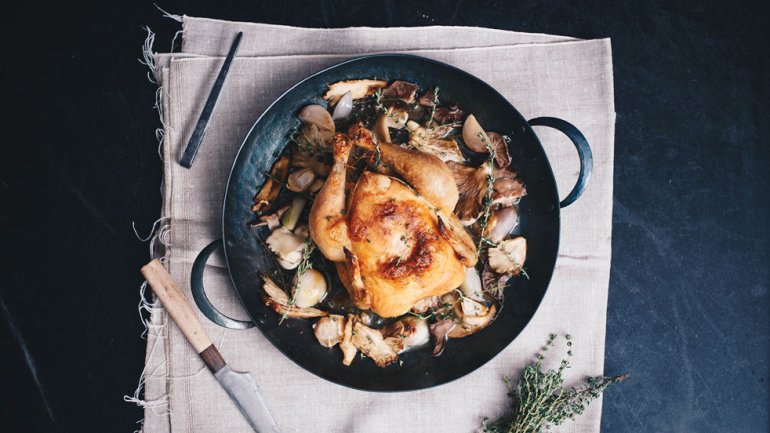Blanc Creatives
Blanc Creatives
With a wait time of several weeks for Blanc Creatives’ hand forged cookware, it’s hard to believe that head blacksmith Corry Blanc once couldn’t sell a single pan.
The Virginia craftsman apprenticed at his uncle’s metal fabrication shop and worked for a blacksmith before branching out on his own in 2008. He made architectural metalwork while working in restaurants, where he started to notice the metal in kitchens. He decided to make a frying pan and took it to the Charlottesville City Market, where he’d been selling small items like meat skewers and bottle openers. “Someone saw it, and they said, ‘Hey, if you made these, people would buy them,’” says Blanc, 34. He set about creating a batch to bring back a few weeks later.
None sold. “No one even had interest,” Blanc says, “so that kind of burst my bubble.” Some people would have called it quits, but not Blanc, who credits his “relentless drive to always move forward.” He gave the pans to chefs he knew and asked for their opinions. He kept refining them based on their advice, “until I got something that everyone agreed was a good product,” he says.
Since launching Blanc Creatives in 2011, his pans have gotten rave reviews in the culinary press, and the company was named overall winner of Garden & Gun’s 2015 Made in the South Awards. That was a tipping point. The company has since grown to a staff of 10, and the products are carried by companies such as Eating Tools and ABC Carpet & Home. He counts a number of chefs among his clients.
While similar to cast-iron ware, the frying pans are much lighter because they’re made of carbon steel. The best part, Blanc says, is the natural nonstick surface they develop. They’re an investment, but they come with a lifetime guarantee. “If [a pan] can last in an industrial kitchen,” he says, “it can last in someone’s home kitchen.” Customers have even said, “I just want to hang this in my kitchen. It’s too pretty to cook on.” To which he says, “Please use it. It’ll get better with age.”
Keeping up with demand is a challenge in itself; avoiding burnout and finding a balance between production and artistic freedom is “the biggest struggle,” Blanc says. He still spends plenty of time in the shop; he makes all of the copper sauté pans, as well as limited runs of garden tool sets, which sell out “as fast as I can make them,” he says.
Yet he never imagined this was how he’d be making a living. “It’s just a string of events that led me here. But I love it,” he says. “I love food. I love chefs. Some of my biggest heroes are chefs. I think if I had to choose another profession, I would’ve definitely done more in the food world. But now I’m just merging the two together.”
Side Dish
A different path: A self-described “art kid” in school, Blanc thought of becoming a potter. Later, working for a blacksmith, he found the process strikingly similar to working with clay. “You start off with a certain size material, and then when you move it, you’re not adding or subtracting, you’re just dispersing the mass,” he explains.
Always learning: “Any good craftsman you can look at, it didn’t happen overnight. You’ve got to make a lot of pieces that don’t sell before you can make a few pieces that do sell.”
His advice: “So many times you’re going to feel like you’re failing – but you’ve just got to muscle through,” Blanc says. “Keep doing it, and keep refining your craft, because you can always be better. Keep developing your skills, and don’t give up. That’s the biggest thing.”




